Tech startups are known for their fast pace; big changes can happen in days or even hours.
How much would change if you walked away from one for a month–or even longer? Would you be left behind? Would you be able to catch up? Would you even have a job at the end of it?
In 2016, I had the opportunity to find out the answers to these questions for myself when I took a six-week sabbatical to study and complete my undergraduate degree.
I’d love to share everything about this experience — how I planned for it, what it was like to be away from a fast-changing startup for so long, how I used the time away, and what it was like returning.
If you have taken a sabbatical before, it will be great to hear from you, too!
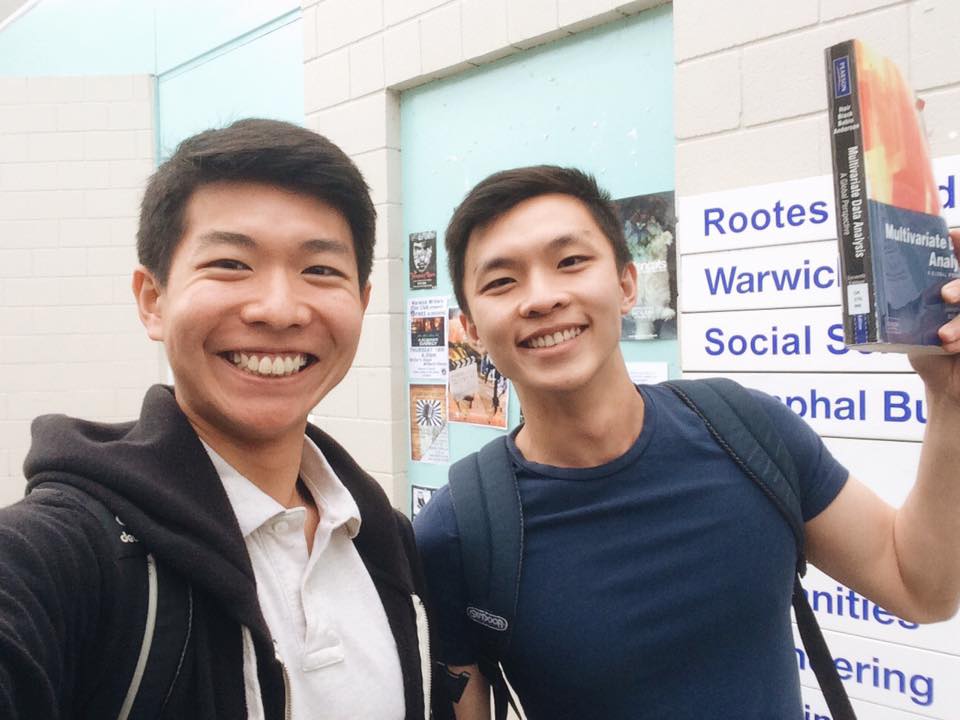
(One of my close friends and I after our last exam)
A little background
In the spring of 2016, I was working part-time at Buffer as part of the community team while pursuing an undergraduate degree in accounting and finance at the University of Warwick in the UK. (Fun fact: That’s the university that Joel and Leo attended!)
It was my final year, and I had nine major exams — seven of them within the first two weeks of the exam period.

Considering how intensive it would be, I felt that taking a break from work to focus on my studies would be helpful. We don’t have formal guidelines for sabbaticals yet at Buffer but Nicole, my team lead at that time, was very open to the idea of me taking time off for my exams. I was grateful to be able to even think about it.
There were many questions in my mind: How long should the sabbatical be? Should I collect my salary during that time? What should I do with my work?
How I prepared: Timing, salary, logistics, and more
Planning the sabbatical: 6 weeks away
The first detail was the duration of the sabbatical. I felt that it would be easier to discuss my sabbatical with the team if they knew how long I’d be away for. As my exams spanned over four weeks and I felt that I needed two full weeks to go through my syllabus, I eventually decided on six weeks away.
Next, I wrote down all the things I felt were right to do in finalizing the decision. The list included things like chatting with the People (our human resources) team, listing out all my tasks, and sharing my plans with the entire team.
Here’s the document I made listing out all my action steps:
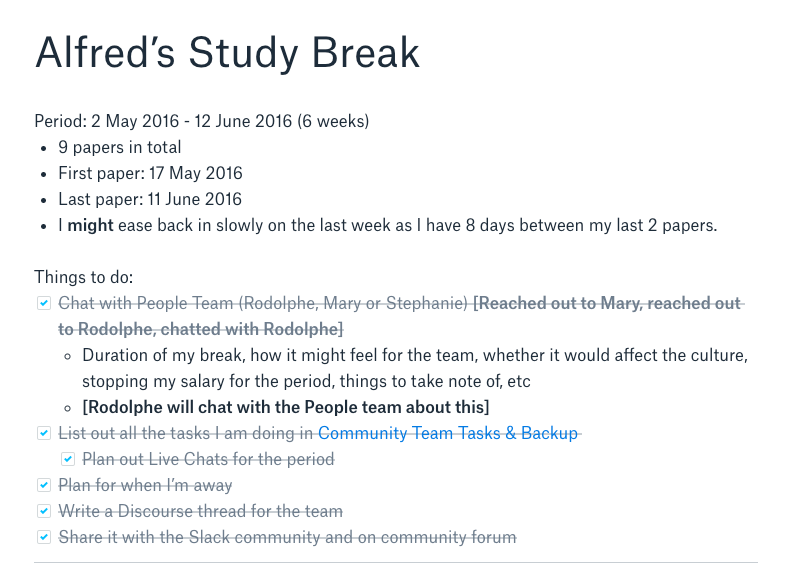
Seeking advice: What to do about salary?
Before making the decision to take such a long time off, I wanted to seek advice from the team. Because it was the first time someone was taking a sabbatical at Buffer, I wanted to make sure I set the right precedent. The people I spoke to early on when making the decision were Nicole (my team lead at that time) and Rodolphe (who manages operations).
Nicole and I chatted about how it would feel for me to be away for six weeks and how the rest of the community team (now part of our marketing team) could help assume some of my tasks while I was away (more on this below). Nicole was very encouraging and supportive about my study break.
Rodolphe and I chatted more about the cultural implications of my study break. I was curious to find out if six weeks feel appropriate (considering I have only worked at Buffer for about eight months then), how it might feel for the entire Buffer team in general, and if there was anything I should take note of.
I offered to pause my salary for the period as I felt that completing my degree in accounting and finance wouldn’t contribute to my role or Buffer directly. After chatting with the People team, Rodolphe came back with a surprise for me:

(Rodolphe meant “4 weeks”. Four years might be a bit too long. ?)
Learning to let go and disconnect
I think the hardest part of the preparation was to make the decision to be fully disconnected. I didn’t want to ask too much of my teammates, but I also didn’t want my work to be left undone for six weeks. So I had initially planned to secretly pop back into the “office” to work for a few hours a week.
Thankfully, Nicole could sense how I was thinking and also understood how I felt since she just had a similar experience when she took her family leave. She strongly encouraged me to disconnect fully from work to focus on my studies.
Nicole taught me that it was all right if less work got done in my area during the period I was away. For example, instead of having weekly events like AMAs or group chats for the Buffer community, we could hold them bi-weekly or once a month temporarily. (Our community is very understanding!) She also taught me that it is all right to ask for help.
Learning these things helped me feel slightly better about disconnecting fully during the sabbatical.
Planning the logistics
The last part of the preparation was to go through the logistics and iron out the details. I created a document to list out all the things I needed help with.
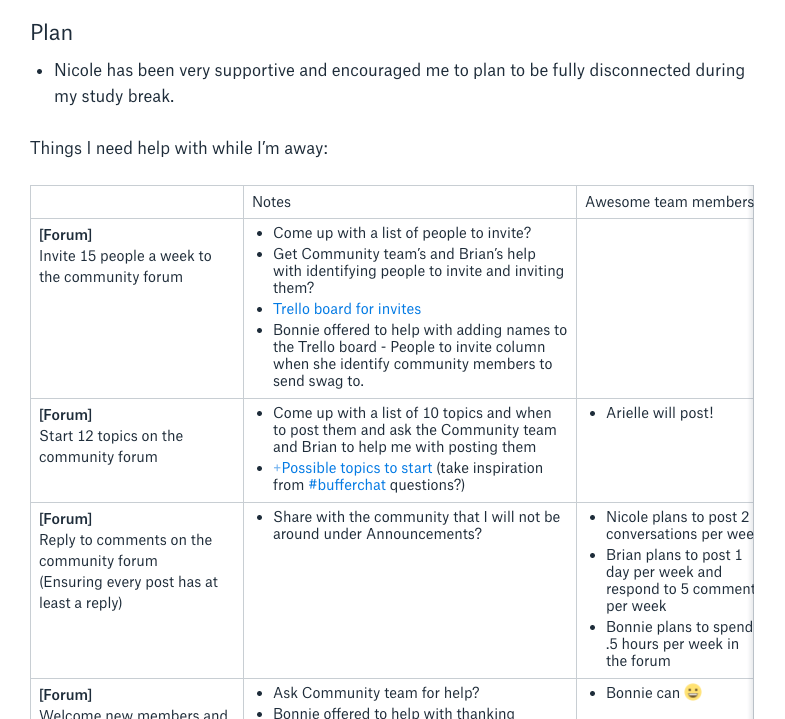
I also created a document with links to everything I was working on and my processes, so that my teammates could refer to these documents if they had any questions.

When I shared the document with the community team (Nicole, Arielle, and Bonnie), they were eager to help and immediately added their names to many of the tasks. I’m so grateful for their enthusiasm to help!
It was then that I finally felt comfortable to be fully disconnected during my study break.
How the sabbatical felt: Focus and fears
Undivided attention and focus
Being able to disconnect fully from work allowed me to fully focus my energy on my exams.
When I think about focus, I often come back to this diagram from Essentialism – The Disciplined Pursuit of Less by Greg McKeown:
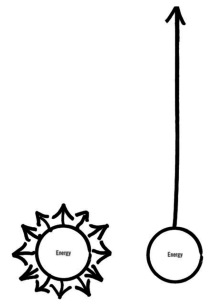
Having a full focus on my studies and not worrying about my work was very beneficial. I only truly realized how much I had to cover when I began studying for my exams. I’d even go to the extent of saying it was necessary for me to get good grades.
Almost all of my energy was devoted to my studies at that time. My daily routine (from Monday to Sunday) looked something like this:
- 6 am: Breakfast and shower
- 7 am: Study for a course
- 11:30 am: Run on some days
- 12:30 pm: Lunch and call my girlfriend
- 2 pm: Study for another course
- 6:30 pm: Dinner
- 7:30 pm: Study again
- 10 pm: Bedtime
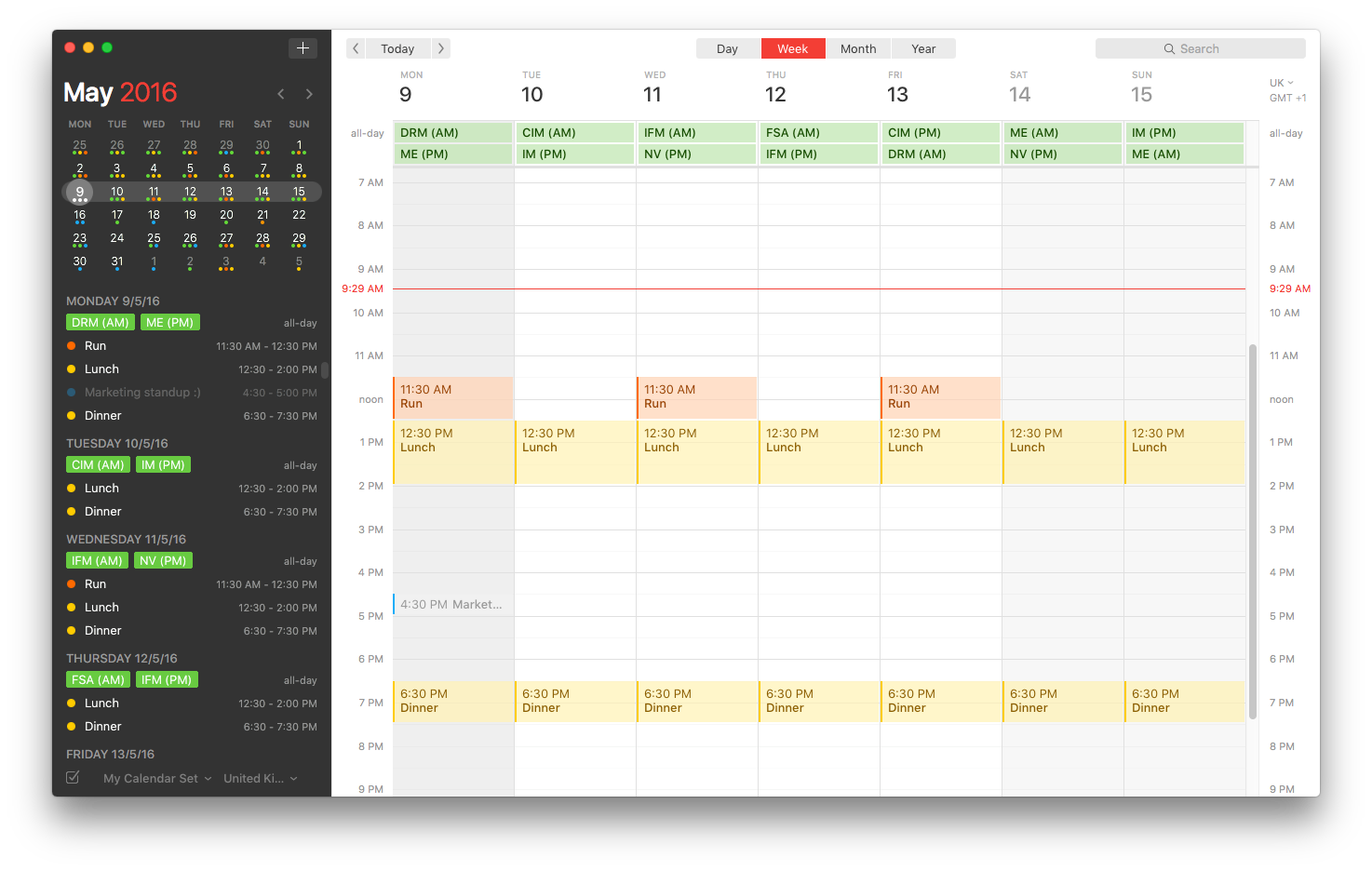
Succumbing to fears and worries
Even when I was busy studying, the self-doubt never went away. Fears and worries would set in when my mind wasn’t occupied with financial statements and option pricing.
If I could be away for such a long time, is my role really necessary? Am I necessary?
It was also a tough period for Buffer at that time. In a way, it was comforting to know that I wasn’t laid off despite being away for several weeks, but it did create a lot of uncertainty. It also made me feel that I should get back to work as soon as possible and play my part to get Buffer over the crisis (more on this below).
It was helpful that Nicole had given me a lot of assurance before I started my study break. It was also helpful that Nicole herself had taken her family leave a while back. To a certain degree, I felt comfortable being away from work as I knew Buffer would keep the role for me (something I’m incredibly grateful for, especially since I hadn’t even worked at Buffer for a year!).
Completing my exams, feeling recharged
After I completed most of my exams, I started looking forward to returning to the team. My sabbatical is pretty unique as it was a mentally challenging one instead of a break. That said, being away from work for a long period of time did get me excited to be back and contributing to the team again.
Also, I was finally able to work full-time and focus on one major commitment instead of juggling two (studies and work). It had been tough splitting my attention between two major commitments, and I wasn’t sure if I was doing my best for both. So I was glad that I could focus on my work and career after my exams.
What it was like returning: New projects, old friends
Things always change quickly at Buffer, so I expected it to be slightly different when I returned. Fortunately, as I went from working part-time to full-time, I had more capacity to take on new projects.
I spent the first few days catching up on things through emails, Discourse threads, and syncs and finding out where I could help out. With our transparent email practice, I could learn about everything that had happened and get as much context as possible.
I dropped one of my previous projects and picked up the beta program. As we were in the middle of our Instagram integration beta, the beta program felt more important at that time. The learning curve was steep, but teammates who had context about the beta program helped me a lot.
Another fun thing about being back was meeting up with the team. I was lucky to be in the UK then, where Buffer has many teammates. We organized a few co-working sessions to spend time together.
What I might have done differently
Reflecting back on this experience, there are two thing I might do differently:
Take the full leave: I think it might have been the circumstances of the time, coupled with the feeling that I have been away for a long time, but I eased back into work near the end of my sabbatical instead of taking the full time. I wanted to get up to speed as soon as possible so that I could contribute to the team again.
Ask for help earlier: I was hesitant to ask my teammates to cover me because I didn’t want to trouble them. But they were so eager to help! If I had reached out earlier, the preparation could have been better.
Companies with paid sabbatical leave
Sabbaticals are still a relatively unusual benefit in America. According to the Society of Human Resource Management, paid sabbatical programs are offered only at 5% of U.S. companies.
But the perk is growing in popularity, and a large majority of employers on Fortune’s best-companies-to-work-for list do offer one.
If you are curious to explore sabbatical leave, here are a few cool companies with such a perk:
Basecamp: Basecamp, a web-based project management tool company, offers the option of a one-month sabbatical for every three years someone has been with the company.
HubSpot: Inbound software company HubSpot offers a month-long sabbatical to those who have been with the company for five years.
Automattic: At Automattic, the company behind WordPress, employees are encouraged to take paid two to three-month sabbatical every five years.
Patagonia: Outdoor brand Patagonia’s concept of a paid sabbatical is pretty special. The Environmental Internship Program offers employees the opportunity to work for an environmental group of their choice for up to two months while continuing to receive their salary and benefits.
Birchbox: Birchbox, a beauty subscription service, offers employees a “tri-batical” for their third year with the company. It includes a paid three-week vacation, a travel stipend, a Birchbox weekend duffel bag, and dinner with the leadership team.
Over to you
In 2017, we’ll be exploring the idea of a sabbatical program more formally at Buffer, and we’d love to learn from you!
Does your company offer sabbatical leave? Have you taken a sabbatical before? How was the experience? Do you have any advice for us?
–
P.s. if anyone is curious about my final grade…

I was awarded a First Class Honours (I believe the US equivalent is a 4.00 GPA or an “A”)!
This would definitely not have happened without the support from Buffer and the teammates I was working closely with, especially Nicole, Arielle, and Bonnie. Thank you, team!
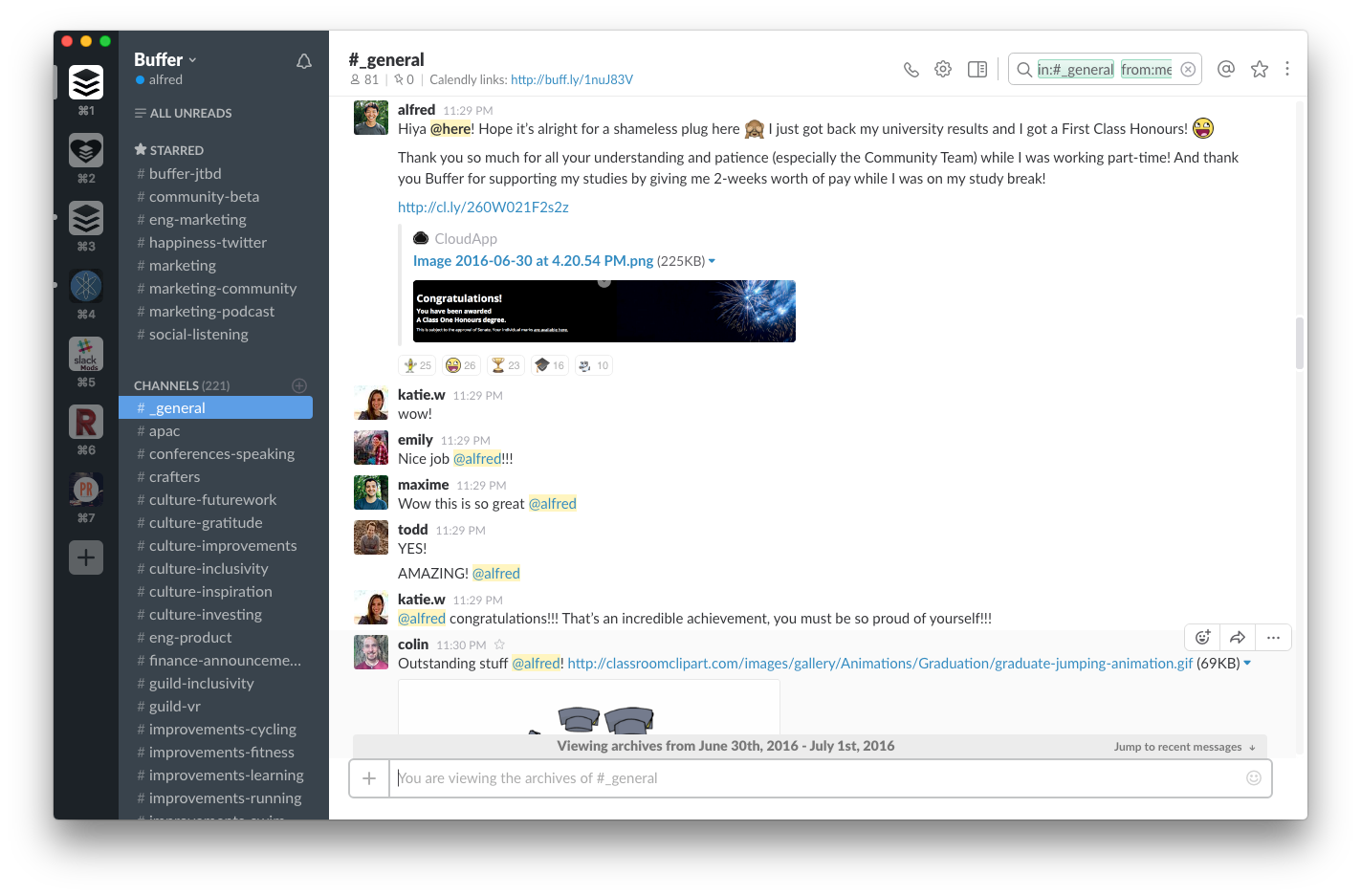
Try Buffer for free
190,000+ creators, small businesses, and marketers use Buffer to grow their audiences every month.




